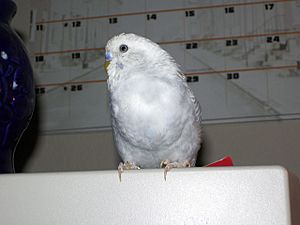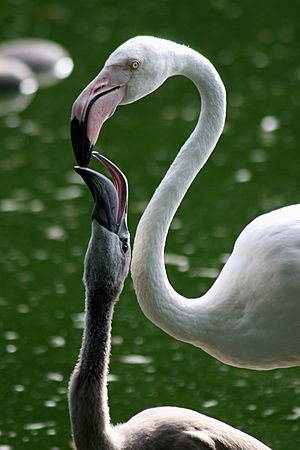Crop (anatomy) facts for kids


Have you ever wondered how some animals store their food before digesting it? Many animals, like birds, some dinosaurs, and even insects, have a special pouch called a crop. It's like a temporary storage bag for food, found in their alimentary canal (which is their digestive system). The crop holds food before it moves on to be fully digested. You can find crops in birds, some dinosaurs, and invertebrates like snails, earthworms, leeches, and insects.
Contents
The Crop in Birds
What is a Bird's Crop?
In birds, the crop is a stretchy, muscular pouch. It is located near their throat, as part of their oesophagus (food pipe). Its main job is to temporarily store food. Not all birds have a crop, but many do.
How Birds Use Their Crop
Some birds, like adult doves and pigeons, use their crop in a very special way. They can produce a substance called crop milk inside it. This "milk" is used to feed their newly hatched babies.
Birds that scavenge, like vultures, often eat a lot when they find food. Their crop can get very full and bulge out. After a big meal, they might sit quietly to digest their food. Most birds of prey, such as hawks and eagles, have a crop. However, owls do not have one.
The Crop in Bees
Bees also have a crop! When a bee collects nectar from flowers, it stores the nectar in its crop. This helps them carry the nectar back to their hive. It's like a special backpack for their sweet findings.
Crop vs. Gizzard
It's easy to confuse a crop with a gizzard, but they are different parts of the digestive system.
- A crop is mainly for storing food. It's like a pantry where food waits its turn.
- A gizzard is for grinding food. It has strong muscles and a tough lining. Some animals even swallow small stones to help their gizzard grind up tough food. The gizzard is found lower down in the digestive tract, closer to the stomach.
For many birds, it's helpful to eat a lot when food is available and then digest it later. In some birds and bees, the food stored in the crop is brought back to the nest. It is then given to other family members. Sometimes, food is even pre-digested and then regurgitated (brought up) from the stomach to feed young ones.
Related pages
Images for kids
-
Two green-thighed parrots with bulging crops after feeding.
See also
 In Spanish: Buche para niños
In Spanish: Buche para niños



